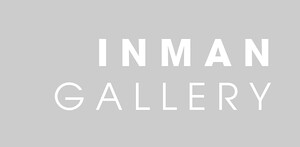The First Time, The Heart
April 6–May 26, 2018
Inman Gallery is pleased to present a solo exhibition of new work by Dario Robleto entitled The First Time, The Heart. The exhibition will be on view through May 26, 2018.
The exhibition debuts a new suite of prints, The First Time, the Heart (A Portrait of Life 1854-1913), published by Island Press at Washington University, St. Louis, Missouri.
Looking through the earliest heart and pulse tracings from the 19th and early 20th centuries, one quickly realizes the sense of excitement early investigators must have felt about the possibilities that emerged with the ability to record and visualize the heart’s movements. With these new tools of observation, the living heart was brought into focus for the first time. Previously suspected and newly discovered diseases and malfunctions of the body were dutifully catalogued, and although recording hearts for diagnostic reasons remained the early priority behind the measurements, something else fascinating started to emerge, an accidental byproduct of the larger study of disease: a poetic portrait of everyday life.
Dario Robleto has collected a series of 50 early pulse recordings that might describe a full life, from birth to death. These recordings, gathered from libraries and archives across Europe and the U.S., have been notated by scientists since the late 19th century in a direct manner that is at once documentation and poetry: “pulse of man 6 feet tall,” “ear lightly touched with feather while sleeping,” “sadness from listening to a sung melody,” “threatening a little girl, 10, to go to the dentist,” “before and after a draught of hot milk,” “mail carrier with amputated arm,” “smelling lavender.” Each instance is likely the first time the heart was recorded during that specific, quotidian experience.
“Occasionally, a breakthrough in science will so alter our mental landscape that, in a sense, everything is new again,” Robleto writes. “Mystery reclaims the banal; revelation is possible once more, embedded in the ordinary.”
In collaboration with poet Adrian Matejka, the 50 archival heart recordings become poems, in nine variations, such as Up, Up from Daydreams / Lullaby:
“8 months pregnant,” 1870
“Umbilical cord, first gasp, cutting of cord,” 1886
“3 month old, sleeping,” 1874
“Snoring,” 1876
“Name softly called while sleeping,” 1877
“Arising from sleep,” 1876
Pulse tracings were first made in 1853 when German physiologist Karl von Vierordt (1818–84) invented a sphygmograph, or “pulse writer.” Vierordt designed the machine to absorb the movement of a pulsing artery into a membrane or spring that would then make an attached stylus pulse in unison. Working with Island Press, Robleto developed an innovative printing technique in homage to the sphygmograph’s rudimentary technology—essentially mark-making in soot from a candle flame. The result is a marriage of form and historical content, an exploration of the ways in which the heart is a site of human empathy and experience, and a deep look at a muscle that bridges imagination, metaphor, emotion, and biology. Robleto makes visible an existing natural language of life that has fascinated scientists and poets for millennia: in his prints, he develops a poetry from the hieroglyphics of humanity’s most intimate organ.
In the south gallery, Robleto continues his ongoing collaboration with media historian Patrick Feaster. The sculpture Unknown and Solitary Seas (Dreams and Emotions of the 19th Century), is accompanied by a sound track, created by Feaster’s innovative approaches to sound processing, making audible the first waveforms of dreams and emotions registered as blood flow to the heart and brain, each originally traced in soot from candle flames in the nineteenth century.
Saturday, May 12 at 1pm
A conversation between Dario Robleto and Adrian Matejka, co-hosted by Gulf Coast: A Journal of Literature and Fine Arts.



